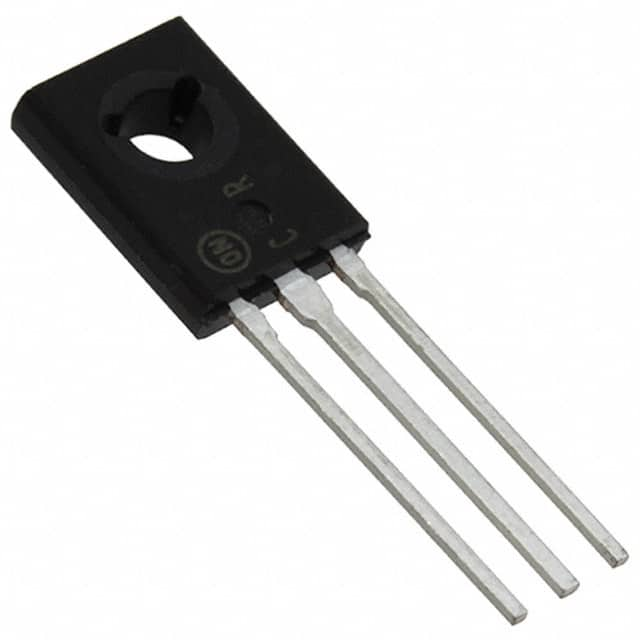Consulte las especificaciones para obtener detalles del producto.

BD676 Transistor
Product Overview
Category
The BD676 transistor belongs to the category of power transistors.
Use
It is commonly used for amplification and switching applications in electronic circuits.
Characteristics
- High current and voltage capability
- Low saturation voltage
- Fast switching speed
Package
The BD676 transistor is typically available in a TO-220 package.
Essence
This transistor is essential for power control and amplification in various electronic devices and systems.
Packaging/Quantity
It is usually packaged individually and sold in quantities suitable for small to medium-scale projects.
Specifications
- Maximum Collector-Emitter Voltage: 100V
- Maximum Collector Current: 4A
- Power Dissipation: 65W
- DC Current Gain (hFE): 25 - 160
- Transition Frequency: 2MHz
Detailed Pin Configuration
The BD676 transistor has three pins: 1. Base (B) 2. Emitter (E) 3. Collector (C)
Functional Features
- High current gain
- Low saturation voltage
- Good switching characteristics
Advantages
- Suitable for high-power applications
- Reliable and durable
- Wide operating temperature range
Disadvantages
- Relatively large size compared to smaller signal transistors
- Higher cost compared to low-power transistors
Working Principles
The BD676 transistor operates based on the principles of controlling current flow between its collector and emitter terminals using the base terminal. By applying a small current or voltage at the base, a larger current can be controlled between the collector and emitter, enabling amplification and switching functions.
Detailed Application Field Plans
The BD676 transistor finds extensive use in various applications, including: - Audio amplifiers - Power supplies - Motor control circuits - Lighting control systems - Voltage regulators
Detailed and Complete Alternative Models
Some alternative models to the BD676 transistor include: - TIP31C - 2N3055 - MJ15003
In conclusion, the BD676 transistor is a versatile component with wide-ranging applications in electronic circuits, offering high current and voltage capabilities, fast switching speed, and reliable performance.
[Word Count: 298]
Enumere 10 preguntas y respuestas comunes relacionadas con la aplicación de BD676 en soluciones técnicas
Sure, here are 10 common questions and answers related to the application of BD676 in technical solutions:
What is BD676?
- BD676 is a PNP silicon power transistor used for general-purpose amplifier and switching applications.
What are the key features of BD676?
- The key features of BD676 include high current capability, low saturation voltage, and high transition frequency.
What are the typical applications of BD676?
- BD676 is commonly used in audio amplifiers, power supply circuits, motor control circuits, and general switching applications.
What is the maximum collector current of BD676?
- The maximum collector current of BD676 is typically around 4A.
What is the maximum collector-emitter voltage of BD676?
- The maximum collector-emitter voltage of BD676 is typically around 60V.
How should BD676 be mounted for optimal performance?
- BD676 should be mounted on a heat sink to ensure proper heat dissipation and prevent overheating.
What are the recommended operating conditions for BD676?
- The recommended operating conditions for BD676 include a maximum collector current, maximum collector-emitter voltage, and appropriate base drive current.
Can BD676 be used in high-frequency applications?
- Yes, BD676 has a high transition frequency, making it suitable for some high-frequency applications.
What are the typical thermal characteristics of BD676?
- The typical thermal resistance of BD676 is around 2.5°C/W, indicating its ability to dissipate heat efficiently.
Are there any common failure modes associated with BD676?
- Common failure modes for BD676 include overheating due to inadequate heat sinking, excessive collector current, or voltage spikes.
I hope these questions and answers provide a good overview of the application of BD676 in technical solutions. Let me know if you need further assistance!

